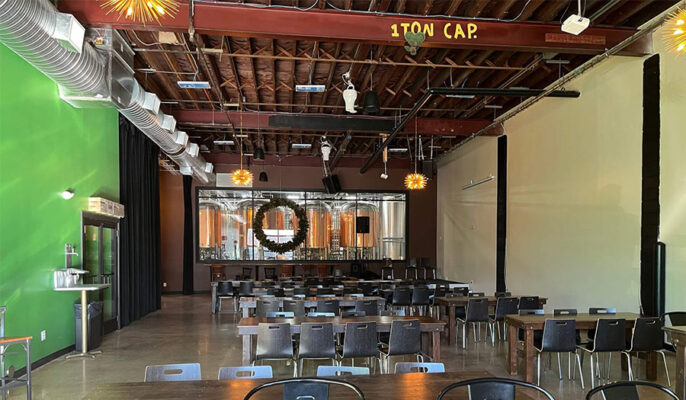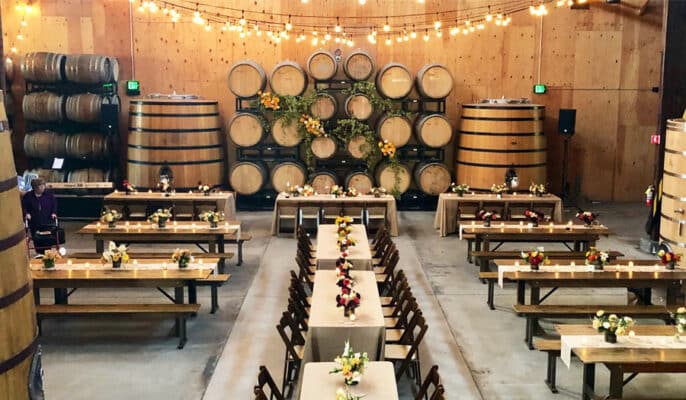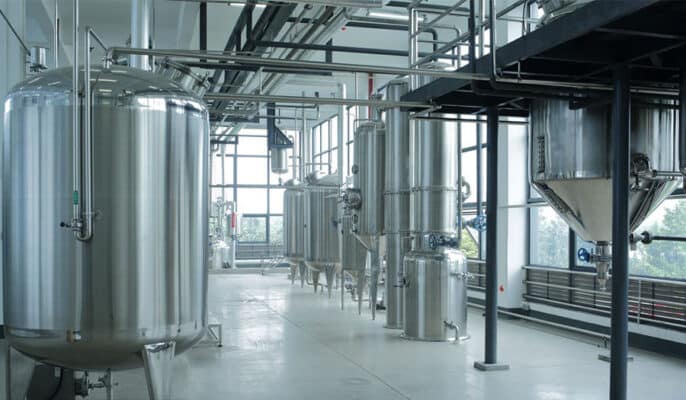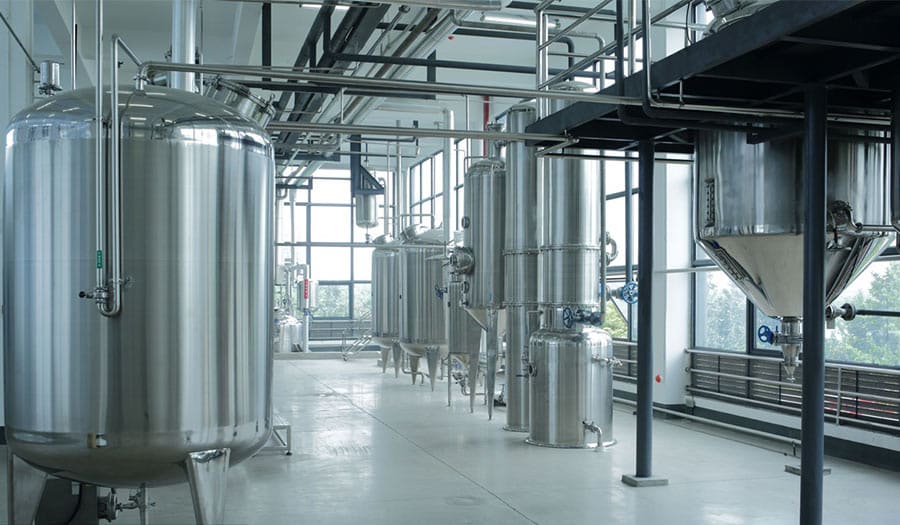Brewery is booming nationwide, and the demand for brewery construction is also growing. However, in this upsurge, space requirements are often overlooked. The space requirements of breweries are not only related to production efficiency but also directly affect the operating costs and market competitiveness of enterprises. From small microbreweries to large commercial breweries, the design and utilization of space are different, covering multiple key areas such as production areas, storage areas, and office areas. Understanding the space required for breweries of various sizes will not only help investors make wise decisions but also help them find the right positioning and development direction in a complex market environment.
Understanding Brewery
A brewery is an industrial facility that specializes in the production and processing of beer. They usually include multiple functional areas designed to transform raw materials (such as malt, hops, and water) into the final beer product. The main components of a brewery include:
- Brewing area: an area used for processes such as malting, boiling, and fermentation.
- Fermentation area: a fermentation tank is stored to allow yeast to ferment and convert sugars into alcohol.
- Filtration and filling area: the fermented beer is filtered, processed, and bottled or filled.
- Storage area: a space for storing raw materials, finished products, and intermediate products.
- Laboratory: a facility for quality control and the development of new flavors.
The size of a brewery can range from a small microbrewery to a large industrial brewery, and the types of beer produced are also diverse, including different styles such as lager, ale, and IPA. With the rise of craft beer, many breweries also have tasting rooms or leisure areas to attract consumers to visit and taste.

How big should my brewery be?
Determine brewery output
The initial stage in selecting a brewery brewing system that is right for your situation is to determine your annual production volume. Keep in mind that you will need a larger system, especially if you plan to produce more beer. For example, a small brewery that plans to produce several smaller batches of beer may require similar system capacity to a larger brewery that plans to produce several larger batches of beer.
Whether the brewery output is distributed between a few simple single vessels and several larger vessels. For example:
- Take the scale of a small brewery system as an example.
- Then multiply this by the number of beers you want to brew per week.
- Increase this number by 50 work weeks in a year.
Brewery production capacity
Production capacity refers to the amount of beer a brewery can produce in a certain period, usually measured in liters. High-capacity breweries often require more equipment, expanded storage space, and additional operating areas, resulting in a significant increase in space requirements. For example, a brewery with an annual output of 100,000 liters will require much more production and storage space than a small brewery with an annual output of only 10,000 liters. As output increases, the number of brewing equipment, fermentation tanks, and storage containers in the factory also increases accordingly. This not only affects the layout of the equipment but also places higher requirements on the efficiency of the production process.
Product categories
Beer type and flavor also have a significant impact on space requirements. The production of craft beer with various flavors usually requires the installation of more fermentation tanks and unique storage spaces to store different types of beer separately. For example, certain flavors of beer may require longer fermentation times or special storage conditions, adding to the requirements for specific environments. This diversity not only enriches the product line but also increases the complexity of space management to a certain extent.
Geographical location
The impact of a brewery’s location on space requirements cannot be ignored. In urban centers, where land resources are scarce, space is often even tighter, requiring efficient spatial planning to make the most of the limited area. In contrast, in suburbs or industrial parks, larger available land is usually available, making plant expansion and equipment layout more flexible. In addition, geographical location also directly affects the convenience of logistics and transportation. Choosing the appropriate location can not only optimize the production process but also enhance market competitiveness.
How much space does a brewery need?
Brewing equipment and production area
The heart of any small brewery lies in its brewing equipment and production area. The size of the brewing equipment directly affects the space required, so proper planning is essential. The production area must be able to accommodate key equipment such as wort barrels, fermentation tanks, hot and cold beer tanks, and storage containers.
When designing the production area, there are several factors to consider:
- Batch quantity: Determine the number of batches you plan to brew each day so that you can properly allocate equipment and space.
- Production expectations: Based on the target production, evaluate the size and number of equipment required to ensure that market demand can be met.
- Future growth forecast: When planning, consider future expansion potential and leave enough space to add equipment and increase production in the future.

Storage space
Small breweries require sufficient storage space for various raw materials such as malt, hops, yeast, etc. In addition, aging barrels, containers and packaging materials need to be stored. Effective inventory management is essential to ensure the smooth progress of the brewing process and avoid production delays caused by shortages. When planning storage space, consider the amount of raw materials and finished products you plan to store, as well as the length of time you want to keep them to ensure efficient operations.
Bar and Tasting Area
Many microbreweries have on-site bars and tasting areas to provide customers with the opportunity to taste their beers. The size of the bar should be determined based on the target audience, expected customer traffic, and local regulations. Consider factors such as the number of seating areas, the spatial layout of the bar, restroom facilities, and any other entertainment or amenities you plan to offer. A comfortable and welcoming bar environment enhances the customer experience and encourages repeat business.
Packaging and Distribution Area
If your microbrewery plans to package and distribute, you will need dedicated areas for canning, bottling, labeling, and packaging. This space should accommodate the necessary equipment, packaging materials, and space to store finished products. The size of the packaging and distribution area will depend on your production volume and the distribution channels you choose to ensure that market demand is met.
Administration and Office Space
Every microbrewery needs administration and office space to handle daily operations, including paperwork, inventory management, marketing, and customer service. These spaces should include workstations, storage areas for documents and supplies, dedicated meeting rooms, and a small break room for employees. A good office environment can improve employee work efficiency and satisfaction, thus laying a solid foundation for the development of the company.
Analysis of space requirements for breweries of different sizes
- Microbrewery: Microbrewery usually has an annual output of less than 10,000 liters. For such breweries, the required space is usually between 100 square meters and 300 square meters. This space is enough to accommodate basic brewing equipment, raw material storage, and a small tasting room.
- Small brewery: Small breweries have an annual output of between 10,000 and 50,000 liters. The space required for such breweries is generally between 300 square meters and 800 square meters. As production capacity increases, the amount of storage space and production equipment also increases, so corresponding space is needed to accommodate.
- Medium-sized brewery: Medium-sized breweries have an annual output of between 50,000 and 200,000 liters, and the space required is usually between 800 square meters and 2,000 square meters. In addition to the increased production equipment, this type of brewery also requires more storage and fermentation space, especially for beer types that require long fermentation times.
- Large brewery: Large breweries usually have an annual output of more than 200,000 liters, and the space required can reach 2,000 square meters or even tens of thousands of square meters. These breweries require extensive production equipment, storage space, packaging areas, and possible expansion areas to handle future production growth.

FAQ
What are the main functional areas of a brewery?
The main functional areas include the brewing area, storage area, packaging area, tasting area, office area, and employee rest area. Each area has its specific space requirements and layout requirements.
How to determine the area of the production area?
The area of production area depends on the planned production capacity, the size of the brewing equipment, the number of batches brewed per day, and the need for future expansion. A reasonable layout can improve work efficiency.
How much storage space is needed?
The storage space needs to be determined based on the number of raw materials (such as malt, hops, yeast, etc.) and finished products. Effective inventory management can help optimize storage needs and avoid shortages.
How to use the space of the brewery efficiently?
Space utilization can be improved by reasonably arranging equipment, using multi-functional areas, implementing three-dimensional storage, and leaving room for expansion.




